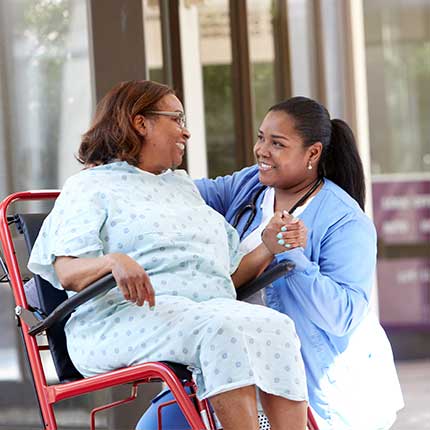Healthy Living: Emergency
Exercising When It's Hot
Hot summer weather doesn't need to sideline outdoor exercise. But it does become more important to modify your routine in order to exercise safely in hot, humid weather.
Combining physical activity with hot temperatures and bright sunshine increases stress on the heart and lungs. Not only does the heart have to work harder to deliver blood and oxygen to exercising muscles, but it also must circulate more blood to the skin where it can be cooled off through sweat evaporation. If the humidity is also high, your body can't be cooled as effectively from its own sweat either.
When exercising outdoors during summer months, it becomes important to adjust your routine to the cooler morning or evening hours – to avoid the midday sun. Some other tips to help keep you safe:
- Stay well-hydrated. Drink lots of water when you're exercising, even if you don't feel thirsty. If your workouts are lengthy, consider alternating sports drinks with your water intake. Such drinks help replace important nutrients you are losing through sweating.
- Take it easy as you start working out. As your body gets used to the heat, you can gradually increase the intensity and duration of your workouts.
- Dress appropriately. Light-colored, loose-fitting clothing does a better job of keeping you cool. Dark colors soak up the heat, so avoid wearing them. Wearing a hat with a brim can reduce sun exposure.
- Use sunscreen with an SPF of at least 30 or higher. This reduces sunburn risk. Apply liberally 30 minutes before heading outdoors and reapply during extended workouts.
Symptoms that the sun may be getting to be too much for you during hot-weather exercise may include:
- Muscle cramps
- Headache, nausea or vomiting
- Fatigue and/or weakness
- Heavy sweating
More severe warning signs of heat stroke include:
- Dizziness or confusion
- Red, hot, dry skin with no sweating
- Rapid heartbeat
- High body temperature
If you suspect a heat-related illness, stop exercising immediately and get out of the heat. Seek shade or move indoors. Drink plenty of water and cool your skin by wetting it with a damp cloth. Seek immediate medical attention if you or an exercise partner show signs of heat stroke and develop a fever higher than 103 degrees Fahrenheit.


